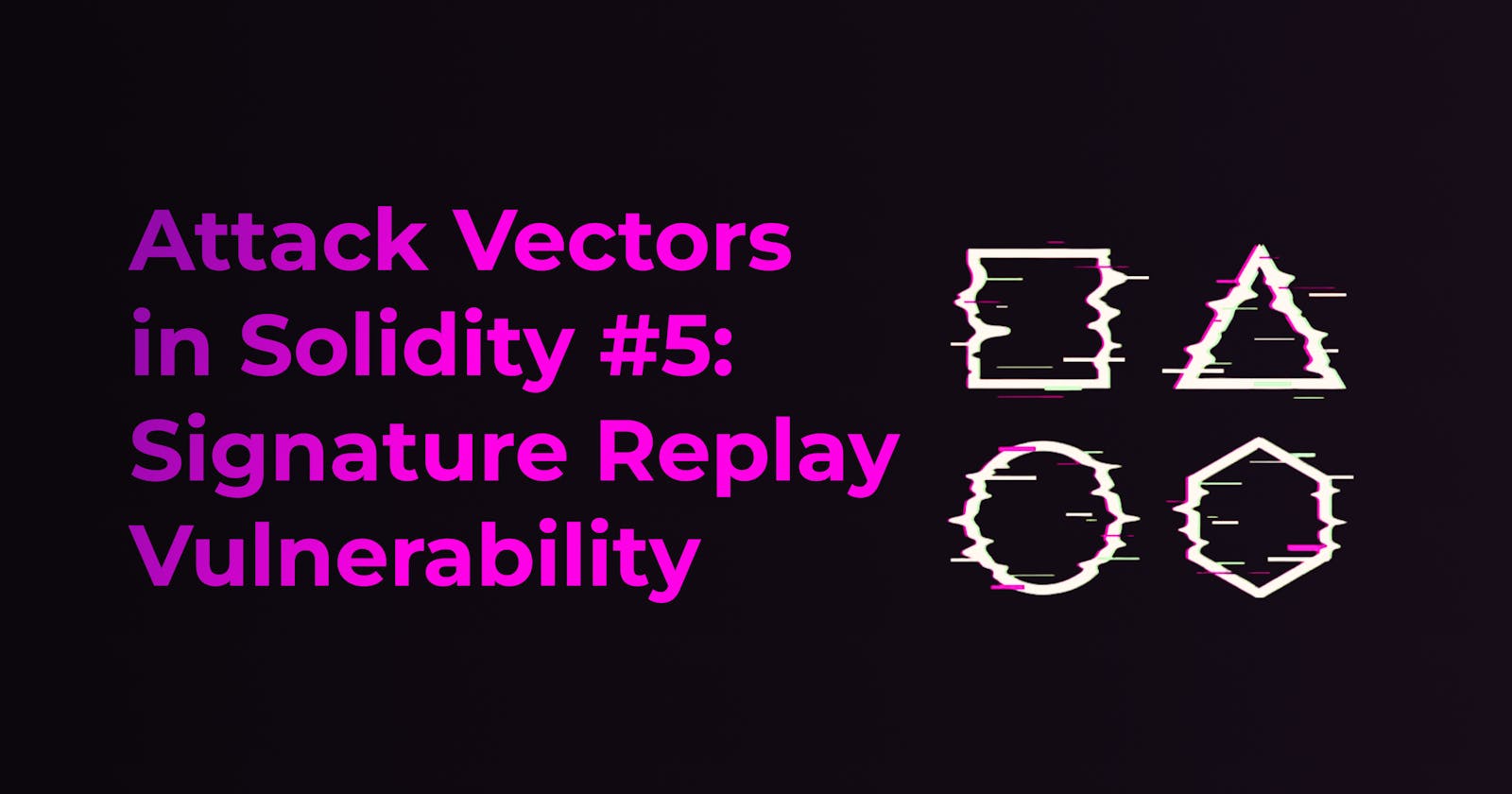Attack Vectors in Solidity #5: Signature Replay Vulnerability
Signature Replay Vulnerability in Solidity
Introduction
In Ethereum and other blockchain networks, transactions are signed by the sender using their private key to prove that they are the owner of the account and have the authority to perform the specified actions. The signed message, known as the "signature," can be replayed on other networks to perform the same actions again. This can potentially lead to security vulnerabilities if the signature is replayed on a network where the transaction should not be valid.
How Signature Replay Attacks Work
In a signature replay attack, an attacker intercepts a signed transaction and resends it on another network where the transaction was not intended to be valid. For example, consider a signed transaction that transfers 1 Ether from account A to account B on the Ethereum mainnet. If the attacker intercepts this transaction and resends it on the Ethereum testnet, the transaction will still be valid and the 1 Ether will be transferred from account A to account B on the testnet as well.
Prevention in Solidity
There are several ways to prevent signature replay attacks in Solidity, the programming language used to write smart contracts on Ethereum. One method is to use a "nonce," which is a unique number that is incremented with each transaction made by an account. By including the nonce in the signed message, the transaction can only be replayed if the nonce is the same on both networks.
Here is an example of how to implement a nonce in Solidity:
pragma solidity ^0.6.0;
contract NonceExample {
uint256 public nonce;
constructor() public {
nonce = 0;
}
function incrementNonce() public {
nonce++;
}
function executeTransaction(uint256 _nonce, uint256 _value) public {
require(_nonce == nonce, "Invalid nonce");
nonce++;
// Perform transaction actions
}
}
In this contract, the nonce is incremented each time the incrementNonce function is called. When the executeTransaction function is called, it checks that the provided nonce matches the current nonce. If the nonce is correct, the transaction is executed, and the nonce is incremented again.
Best Practices
In addition to using a nonce, there are a few other best practices to follow to prevent signature replay attacks:
Use a different network ID for each network you deploy to. This will prevent transactions signed on one network from being valid on another network with a different ID.
Use a chain-specific signature scheme, such as EIP-155 in Ethereum, which includes the chain ID in the signed message. This will prevent transactions signed on one chain from being valid on another chain with a different ID.
Encrypt the signed message before sending it over the network. This will prevent the attacker from intercepting and replaying the transaction.
Conclusion
Signature replay attacks can be a serious security vulnerability in blockchain applications. It is important to take steps to prevent these attacks, such as using a nonce and following best practices like using a different network ID and encrypting the signed message. By implementing these measures, you can help ensure the security and integrity of your blockchain applications.
Thanks for checking out my article! I hope you found it helpful and informative. If you have any thoughts or feedback, please don't hesitate to leave a comment. And if you have any questions or suggestions for future articles, I'd love to hear them. Thanks for your support!
